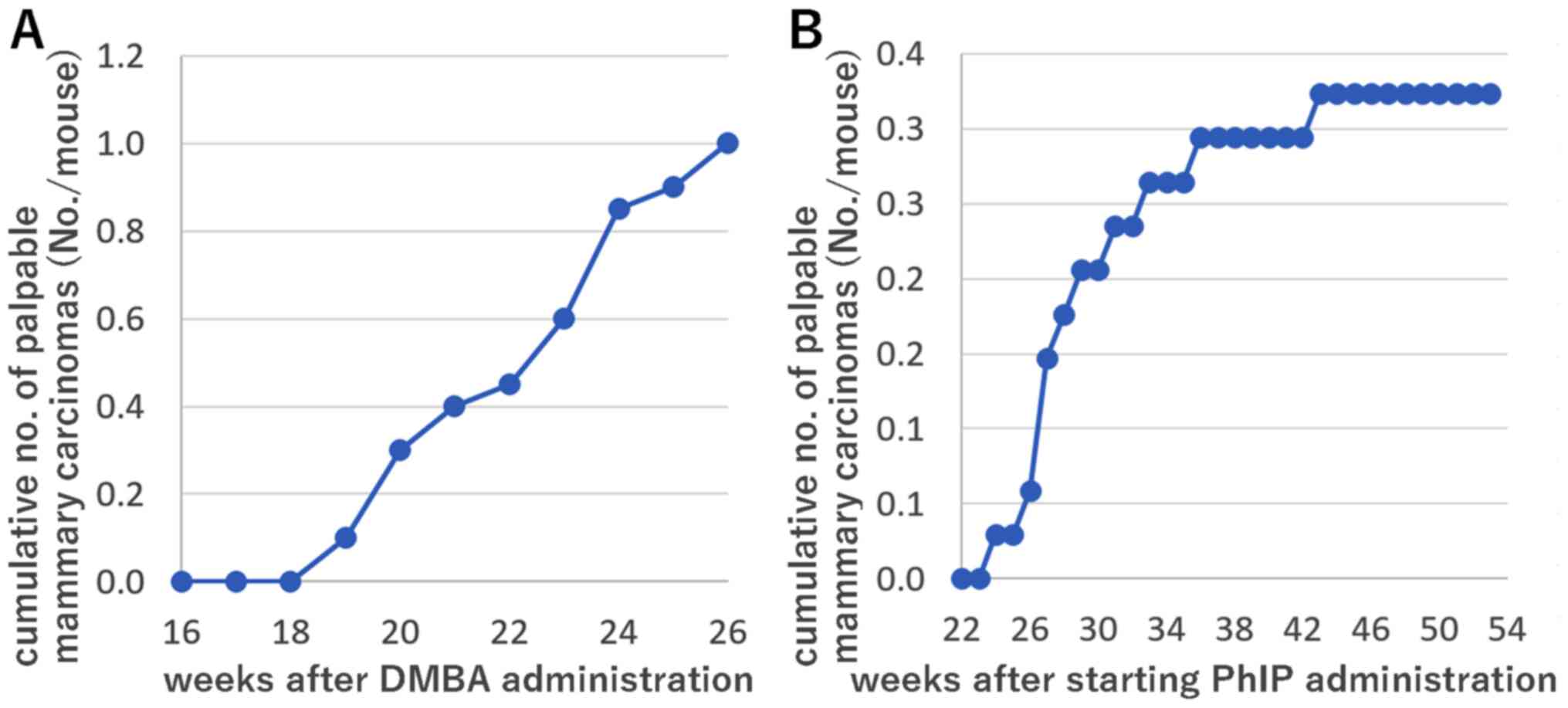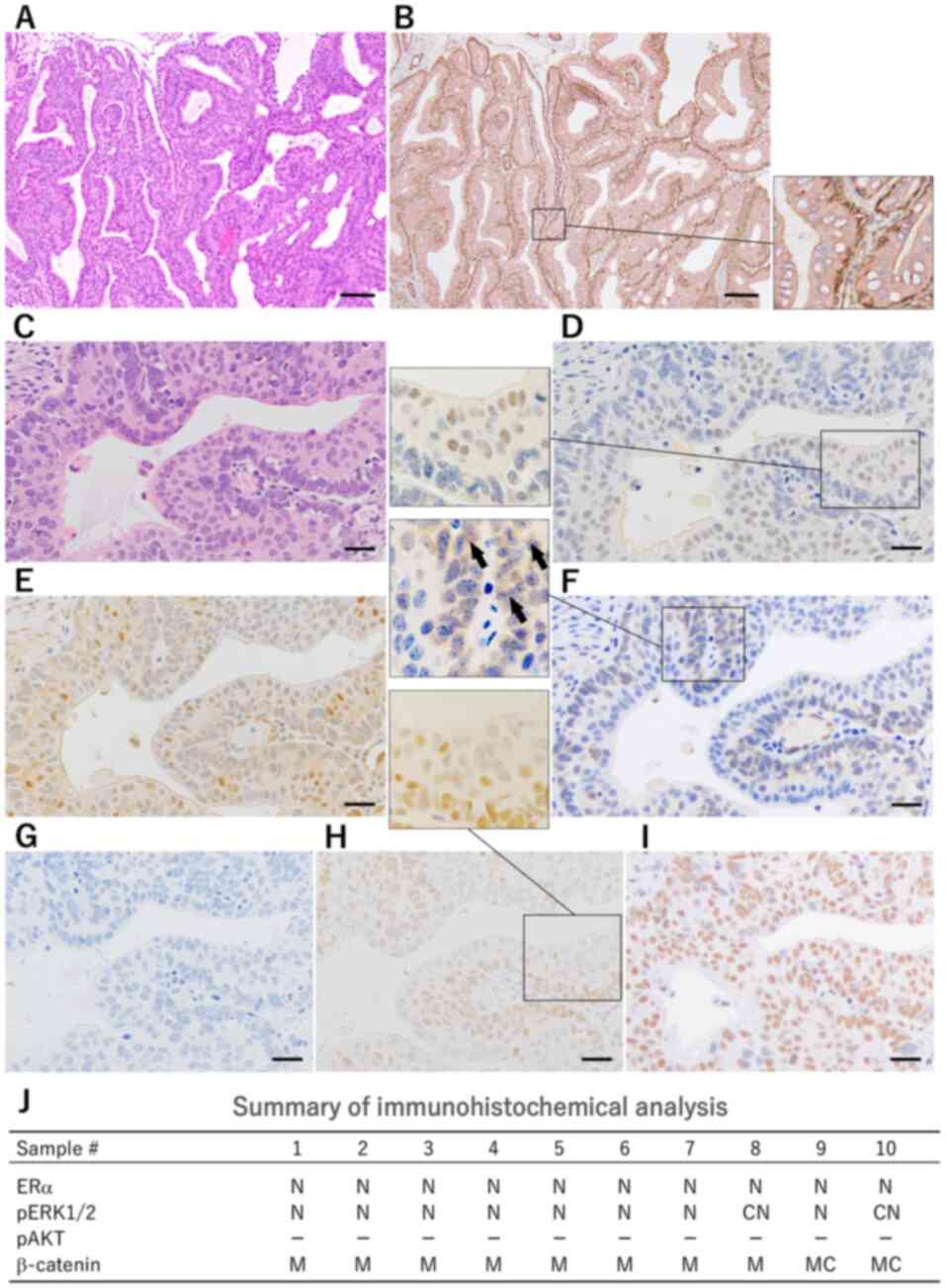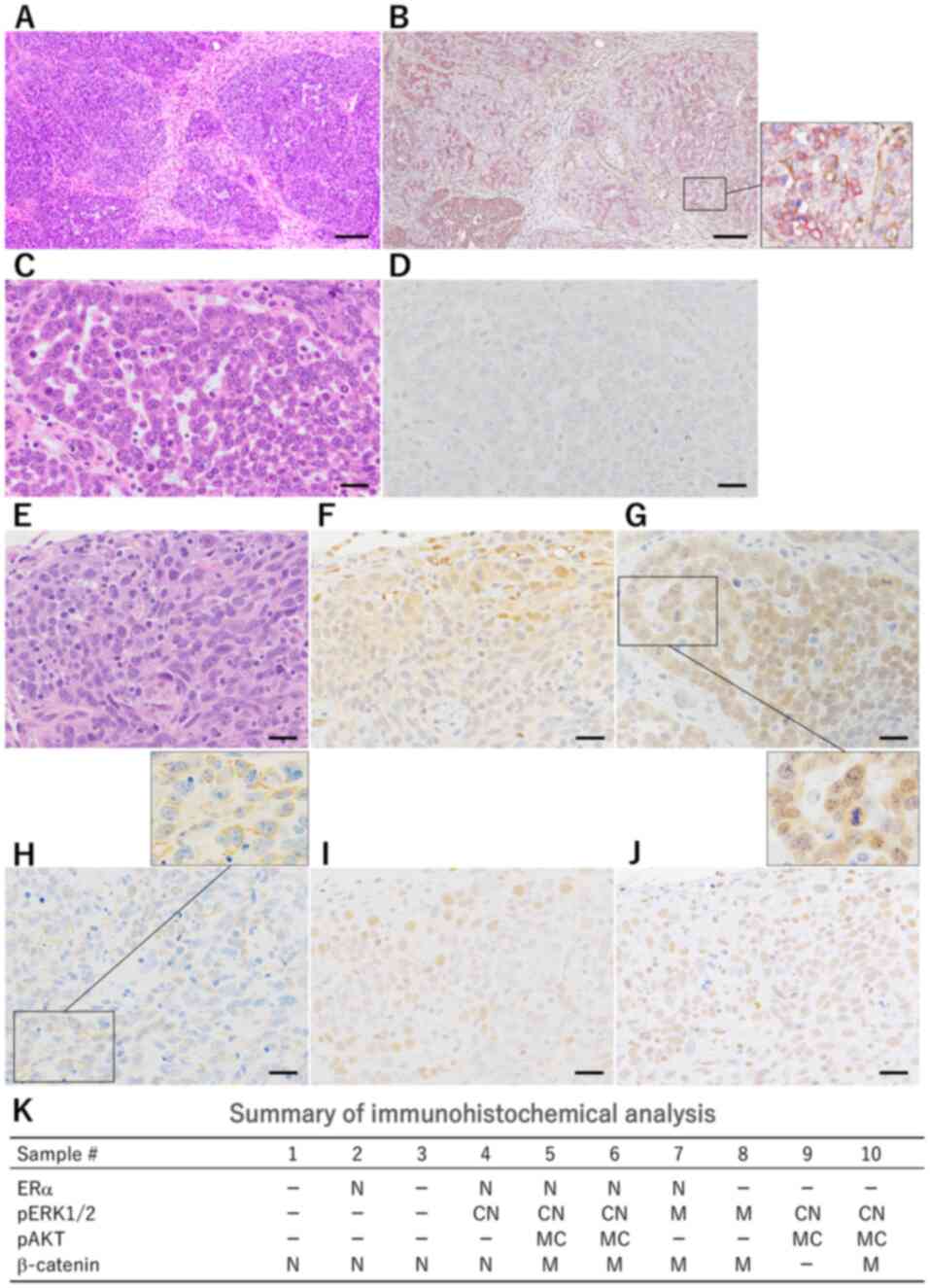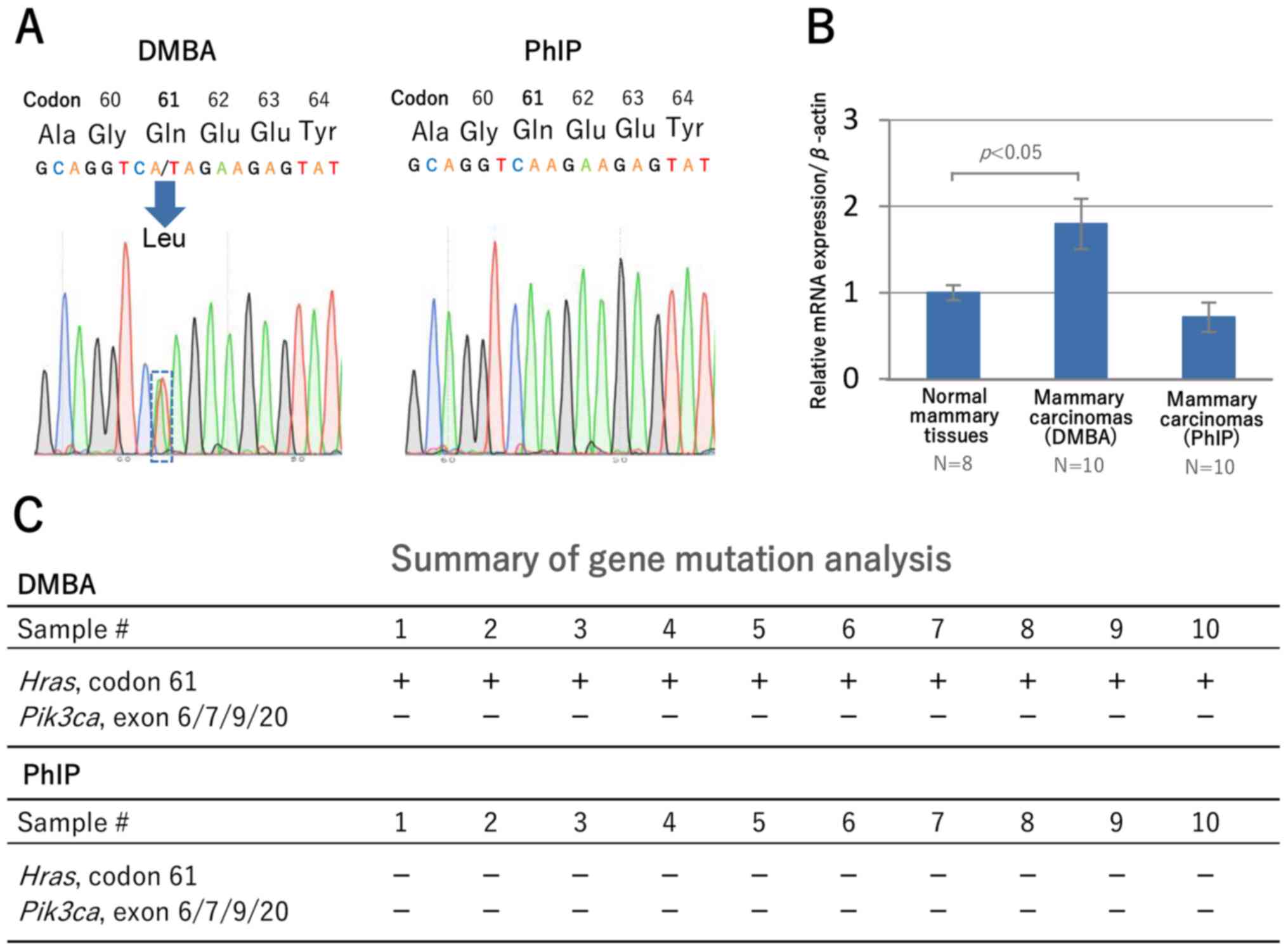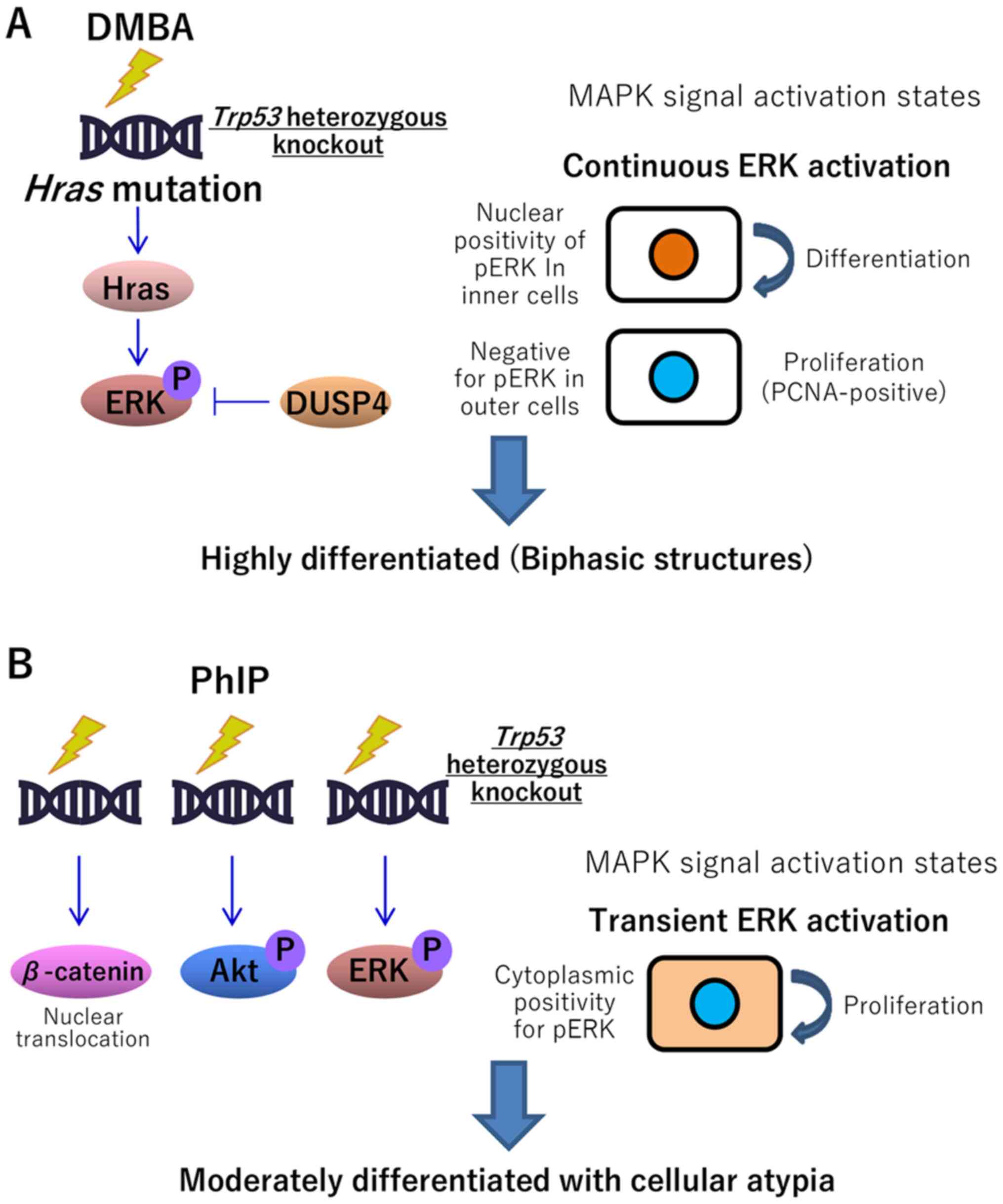|
1
|
Fidler MM, Gupta S, Soerjomataram I,
Ferlay J, Steliarova-Foucher E and Bray F: Cancer incidence and
mortality among young adults aged 20–39 years worldwide in 2012: A
population-based study. Lancet Oncol. 18:1579–1589. 2017.
View Article : Google Scholar : PubMed/NCBI
|
|
2
|
Johnson RH, Chien FL and Bleyer A:
Incidence of breast cancer with distant involvement among women in
the United States, 1976 to 2009. JAMA. 309:800–805. 2013.
View Article : Google Scholar : PubMed/NCBI
|
|
3
|
DeSantis CE, Ma J, Gaudet MM, Newman LA,
Miller KD, Goding Sauer A, Jemal A and Siegel RL: Breast cancer
statistics, 2019. CA Cancer J Clin. 69:438–451. 2019. View Article : Google Scholar : PubMed/NCBI
|
|
4
|
Kataoka A, Iwamoto T, Tokunaga E, Tomotaki
A, Kumamaru H, Miyata H, Niikura N, Kawai M, Anan K, Hayashi N, et
al: Young adult breast cancer patients have a poor prognosis
independent of prognostic clinicopathological factors: A study from
the Japanese Breast Cancer Registry. Breast Cancer Res Treat.
160:163–172. 2016. View Article : Google Scholar : PubMed/NCBI
|
|
5
|
Imai T, Cho YM, Takahashi M, Kitahashi T,
Takami S, Nishikawa A and Ogawa K: High susceptibility of
heterozygous (+/fa) lean Zucker rats to
7,12-dimethylbenz(a)anthracene-induced mammary carcinogenesis.
Oncol Rep. 29:1914–1922. 2013. View Article : Google Scholar : PubMed/NCBI
|
|
6
|
Kaga C, Takagi A, Kano M, Kado S, Kato I,
Sakai M, Miyazaki K, Nanno M, Ishikawa F, Ohashi Y, et al:
Lactobacillus casei Shirota enhances the preventive efficacy
of soymilk in chemically induced breast cancer. Cancer Sci.
104:1508–1514. 2013. View Article : Google Scholar : PubMed/NCBI
|
|
7
|
Dabydeen SA and Furth PA: Genetically
engineered ERα-positive breast cancer mouse models. Endocr Relat
Cancer. 21:R195–R208. 2014. View Article : Google Scholar : PubMed/NCBI
|
|
8
|
Huggins C, Grand LC and Brillantes FP:
Mammary cancer induced by a single feeding of polymucular
hydrocarbons, and its suppression. Nature. 189:204–207. 1961.
View Article : Google Scholar : PubMed/NCBI
|
|
9
|
Russo J, Gusterson BA, Rogers AE, Russo
IH, Wellings SR and van Zwieten MJ: Comparative study of human and
rat mammary tumorigenesis. Lab Invest. 62:244–278. 1990.PubMed/NCBI
|
|
10
|
Abba MC, Zhong Y, Lee J, Kil H, Lu Y,
Takata Y, Simper MS, Gaddis S, Shen J and Aldaz CM: DMBA induced
mouse mammary tumors display high incidence of activating
Pik3caH1047 and loss of function Pten mutations. Oncotarget.
7:64289–64299. 2016. View Article : Google Scholar : PubMed/NCBI
|
|
11
|
Rehm S: Chemically induced mammary gland
adenomyoepitheliomas and myoepithelial carcinomas of mice.
Immunohistochemical and ultrastructural features. Am J Pathol.
136:575–584. 1990.PubMed/NCBI
|
|
12
|
Hasegawa R, Sano M, Tamano S, Imaida K,
Shirai T, Nagao M, Sugimura T and Ito N: Dose-dependence of
2-amino-1-methyl-6-phenylimidazo[4,5-b]-pyridine (PhIP)
carcinogenicity in rats. Carcinogenesis. 14:2553–2557. 1993.
View Article : Google Scholar : PubMed/NCBI
|
|
13
|
Shirai T, Sano M, Tamano S, Takahashi S,
Hirose M, Futakuchi M, Hasegawa R, Imaida K, Matsumoto K,
Wakabayashi K, et al: The prostate: A target for carcinogenicity of
2-amino-1-methyl-6-phenylimidazo[4,5-b]pyridine (PhIP) derived from
cooked foods. Cancer Res. 57:195–198. 1997.PubMed/NCBI
|
|
14
|
Nakagama H, Ochiai M, Ubagai T, Tajima R,
Fujiwara K, Sugimura T and Nagao M: A rat colon cancer model
induced by 2-amino-1-methyl-6-phenylimidazo[4,5-b]pyridine, PhIP.
Mutat Res. 506-507:137–144. 2002. View Article : Google Scholar : PubMed/NCBI
|
|
15
|
Ghoshal A, Preisegger KH, Takayama S,
Thorgeirsson SS and Snyderwine EG: Induction of mammary tumors in
female Sprague-Dawley rats by the food-derived carcinogen
2-amino-1-methyl-6-phenylimidazo[4,5-b]pyridine and effect of
dietary fat. Carcinogenesis. 15:2429–2433. 1994. View Article : Google Scholar : PubMed/NCBI
|
|
16
|
Ip C, Carter CA and Ip MM: Requirement of
essential fatty acid for mammary tumorigenesis in the rat. Cancer
Res. 45:1997–2001. 1985.PubMed/NCBI
|
|
17
|
Welsch CW: Relationship between dietary
fat and experimental mammary tumorigenesis: A review and critique.
Cancer Res. 52 (Suppl 7):2040s–2048s. 1992.PubMed/NCBI
|
|
18
|
Jiang Y, Pan Y, Rhea PR, Tan L, Gagea M,
Cohen L, Fischer SM and Yang P: A sucrose-enriched diet promotes
tumorigenesis in mammary gland in part through the 12-Lipoxygenase
pathway. Cancer Res. 76:24–29. 2016. View Article : Google Scholar : PubMed/NCBI
|
|
19
|
Lo CY, Hsieh PH, Chen HF and Su HM: A
maternal high-fat diet during pregnancy in rats results in a
greater risk of carcinogen-induced mammary tumors in the female
offspring than exposure to a high-fat diet in postnatal life. Int J
Cancer. 125:767–773. 2009. View Article : Google Scholar : PubMed/NCBI
|
|
20
|
Grassi TF, Bidinotto LT, Lopes GA,
Zapaterini JR, Rodrigues MA and Barbisan LF: Maternal western-style
diet enhances the effects of chemically-induced mammary tumors in
female rat offspring through transcriptome changes. Nutr Res.
61:41–52. 2019. View Article : Google Scholar : PubMed/NCBI
|
|
21
|
Macacu A, Autier P, Boniol M and Boyle P:
Active and passive smoking and risk of breast cancer: A
meta-analysis. Breast Cancer Res Treat. 154:213–224. 2015.
View Article : Google Scholar : PubMed/NCBI
|
|
22
|
Hecht SS: Tobacco smoke carcinogens and
breast cancer. Environ Mol Mutagen. 39:119–126. 2002. View Article : Google Scholar : PubMed/NCBI
|
|
23
|
Engin A: Obesity-associated breast cancer:
Analysis of risk factors. Adv Exp Med Biol. 960:571–606. 2017.
View Article : Google Scholar : PubMed/NCBI
|
|
24
|
Machida Y, Sudo Y, Uchiya N and Imai T:
Increased susceptibility to mammary carcinogenesis and an opposite
trend in endometrium in Trp53 heterozygous knockout female mice by
backcrossing the BALB/c strain onto the background C3H strain. J
Toxicol Pathol. 32:197–203. 2019. View Article : Google Scholar : PubMed/NCBI
|
|
25
|
Yan H, Blackburn AC, McLary SC, Tao L,
Roberts AL, Xavier EA, Dickinson ES, Seo JH, Arenas RB, Otis CN, et
al: Pathways contributing to development of spontaneous mammary
tumors in BALB/c-Trp53+/− mice. Am J Pathol.
176:1421–1432. 2010. View Article : Google Scholar : PubMed/NCBI
|
|
26
|
Tsukada T, Tomooka Y, Takai S, Ueda Y,
Nishikawa S, Yagi T, Tokunaga T, Takeda N, Suda Y, Abe S, et al:
Enhanced proliferative potential in culture of cells from
p53-deficient mice. Oncogene. 8:3313–3322. 1993.PubMed/NCBI
|
|
27
|
Ueda M, Imai T, Takizawa T, Onodera H,
Mitsumori K, Matsui T and Hirose M: Possible enhancing effects of
atrazine on growth of 7,12-dimethylbenz(a) anthracene-induced
mammary tumors in ovariectomized Sprague-Dawley rats. Cancer Sci.
96:19–25. 2005. View Article : Google Scholar : PubMed/NCBI
|
|
28
|
el-Bayoumy K, Chae YH, Upadhyaya P,
Rivenson A, Kurtzke C, Reddy B and Hecht SS: Comparative
tumorigenicity of benzo[a]pyrene, 1-nitropyrene and
2-amino-1-methyl-6-phenylimidazo[4,5-b]pyridine administered by
gavage to female CD rats. Carcinogenesis. 16:431–434. 1995.
View Article : Google Scholar : PubMed/NCBI
|
|
29
|
Snyderwine EG, Thorgeirsson UP, Venugopal
M and Roberts-Thomson SJ: Mammary gland carcinogenicity of
2-amino-1-methyl-6-phenylimidazo[4,5-b]pyridine in Sprague-Dawley
rats on high- and low-fat diets. Nutr Cancer. 31:160–167. 1998.
View Article : Google Scholar : PubMed/NCBI
|
|
30
|
Imaoka T, Nishimura M, Doi K, Tani S,
Ishikawa K, Yamashita S, Ushijima T, Imai T and Shimada Y:
Molecular characterization of cancer reveals interactions between
ionizing radiation and chemicals on rat mammary carcinogenesis. Int
J Cancer. 134:1529–1538. 2014. View Article : Google Scholar : PubMed/NCBI
|
|
31
|
Workman P, Aboagye EO, Balkwill F, Balmain
A, Bruder G, Chaplin DJ, Double JA, Everitt J, Farningham DA,
Glennie MJ, et al Committee of the National Cancer Research
Institute, : Guidelines for the welfare and use of animals in
cancer research. Br J Cancer. 102:1555–1577. 2010. View Article : Google Scholar : PubMed/NCBI
|
|
32
|
Cardiff RD, Anver MR, Gusterson BA,
Hennighausen L, Jensen RA, Merino MJ, Rehm S, Russo J, Tavassoli
FA, Wakefield LM, et al: The mammary pathology of genetically
engineered mice: The consensus report and recommendations from the
Annapolis meeting. Oncogene. 19:968–988. 2000. View Article : Google Scholar : PubMed/NCBI
|
|
33
|
Rudmann D, Cardiff R, Chouinard L, Goodman
D, Küttler K, Marxfeld H, Molinolo A, Treumann S and Yoshizawa K;
INHAND Mammary, Zymbal's, Preputial, and Clitoral Gland Organ
Working Group, : Proliferative and nonproliferative lesions of the
rat and mouse mammary, Zymbal's, preputial, and clitoral glands.
Toxicol Pathol. 40 (Suppl 6):7S–39S. 2012. View Article : Google Scholar : PubMed/NCBI
|
|
34
|
Kito K, Kihana T, Sugita A, Murao S, Akehi
S, Sato M, Tachibana M, Kimura S and Ueda N: Incidence of p53 and
Ha-ras gene mutations in chemically induced rat mammary carcinomas.
Mol Carcinog. 17:78–83. 1996. View Article : Google Scholar : PubMed/NCBI
|
|
35
|
El-Sohemy A and Archer MC: Inhibition of
N-methyl-N-nitrosourea- and 7,12-dimethylbenz[a] anthracene-induced
rat mammary tumorigenesis by dietary cholesterol is independent of
Ha-Ras mutations. Carcinogenesis. 21:827–831. 2000. View Article : Google Scholar : PubMed/NCBI
|
|
36
|
Cancer Genome Atlas Network, .
Comprehensive molecular portraits of human breast tumours. Nature.
490:61–70. 2012. View Article : Google Scholar : PubMed/NCBI
|
|
37
|
Livak KJ and Schmittgen TD: Analysis of
relative gene expression data using real-time quantitative PCR and
the 2(-Delta Delta C(T)) method. Methods. 25:402–408. 2001.
View Article : Google Scholar : PubMed/NCBI
|
|
38
|
Kanda Y: Investigation of the freely
available easy-to-use software ‘EZR’ for medical statistics. Bone
Marrow Transplant. 48:452–458. 2013. View Article : Google Scholar : PubMed/NCBI
|
|
39
|
Kumar R, Medina D and Sukumar S:
Activation of H-ras oncogenes in preneoplastic mouse mammary
tissues. Oncogene. 5:1271–1277. 1990.PubMed/NCBI
|
|
40
|
Jerry DJ, Butel JS, Donehower LA, Paulson
EJ, Cochran C, Wiseman RW and Medina D: Infrequent p53 mutations in
7,12-dimethylbenz[a]anthracene-induced mammary tumors in BALB/c and
p53 hemizygous mice. Mol Carcinog. 9:175–183. 1994. View Article : Google Scholar : PubMed/NCBI
|
|
41
|
Venkatachalam S, Tyner SD, Pickering CR,
Boley S, Recio L, French JE and Donehower LA: Is p53
haploinsufficient for tumor suppression? Implications for the
p53+/− mouse model in carcinogenicity testing. Toxicol
Pathol. 29 (Suppl 1):147–154. 2001. View Article : Google Scholar : PubMed/NCBI
|
|
42
|
Hollstein M and Hainaut P: Massively
regulated genes: The example of TP53. J Pathol. 220:164–173. 2010.
View Article : Google Scholar : PubMed/NCBI
|
|
43
|
Nagao M, Ushijima T, Watanabe N, Okochi E,
Ochiai M, Nakagama H and Sugimura T: Studies on mammary
carcinogenesis induced by a heterocyclic amine,
2-amino-1-methyl-6-phenylimidazo[4,5-b]pyridine, in mice and rats.
Environ Mol Mutagen. 39:158–164. 2002. View Article : Google Scholar : PubMed/NCBI
|
|
44
|
Tan PH and Ellis IO: Myoepithelial and
epithelial-myoepithelial, mesenchymal and fibroepithelial breast
lesions: Updates from the WHO Classification of Tumours of the
Breast 2012. J Clin Pathol. 66:465–470. 2013. View Article : Google Scholar : PubMed/NCBI
|
|
45
|
McLaren BK, Smith J, Schuyler PA, Dupont
WD and Page DL: Adenomyoepithelioma: Clinical, histologic, and
immunohistologic evaluation of a series of related lesions. Am J
Surg Pathol. 29:1294–1299. 2005. View Article : Google Scholar : PubMed/NCBI
|
|
46
|
Cardiff RD, Gumerlock PH, Soong MM,
Dandekar S, Barry PA, Young LJ and Meyers FJ: c-H-ras-1 expression
in 7,12-dimethyl benzanthracene-induced Balb/c mouse mammary
hyperplasias and their tumors. Oncogene. 3:205–213. 1988.PubMed/NCBI
|
|
47
|
Watanabe H, Ishibashi K, Mano H, Kitamoto
S, Sato N, Hoshiba K, Kato M, Matsuzawa F, Takeuchi Y, Shirai T, et
al: Mutant p53-expressing cells undergo necroptosis via cell
competition with the neighboring normal epithelial cells. Cell Rep.
23:3721–3729. 2018. View Article : Google Scholar : PubMed/NCBI
|
|
48
|
Ramirez-Ardila D, Timmermans AM, Helmijr
JA, Martens JW, Berns EM and Jansen MP: Increased MAPK1/3
phosphorylation in luminal breast cancer related with PIK3CA
hotspot mutations and prognosis. Transl Oncol. 10:854–866. 2017.
View Article : Google Scholar : PubMed/NCBI
|
|
49
|
Geyer FC, Li A, Papanastasiou AD, Smith A,
Selenica P, Burke KA, Edelweiss M, Wen HC, Piscuoglio S, Schultheis
AM, et al: Recurrent hotspot mutations in HRAS Q61 and PI3K-AKT
pathway genes as drivers of breast adenomyoepitheliomas. Nat
Commun. 9:18162018. View Article : Google Scholar : PubMed/NCBI
|
|
50
|
Ginter PS, McIntire PJ, Kurtis B,
Mirabelli S, Motanagh S, Hoda S, Elemento O, Shin SJ and Mosquera
JM: Adenomyoepithelial tumors of the breast: Molecular
underpinnings of a rare entity. Mod Pathol. 33:1764–1772. 2020.
View Article : Google Scholar : PubMed/NCBI
|
|
51
|
Kato S, Endoh H, Masuhiro Y, Kitamoto T,
Uchiyama S, Sasaki H, Masushige S, Gotoh Y, Nishida E, Kawashima H,
et al: Activation of the estrogen receptor through phosphorylation
by mitogen-activated protein kinase. Science. 270:1491–1494. 1995.
View Article : Google Scholar : PubMed/NCBI
|
|
52
|
Marshall CJ: Specificity of receptor
tyrosine kinase signaling: Transient versus sustained extracellular
signal-regulated kinase activation. Cell. 80:179–185. 1995.
View Article : Google Scholar : PubMed/NCBI
|
|
53
|
Owens DM and Keyse SM: Differential
regulation of MAP kinase signalling by dual-specificity protein
phosphatases. Oncogene. 26:3203–3213. 2007. View Article : Google Scholar : PubMed/NCBI
|
|
54
|
Shan L, He M, Yu M, Qiu C, Lee NH, Liu ET
and Snyderwine EG: cDNA microarray profiling of rat mammary gland
carcinomas induced by
2-amino-1-methyl-6-phenylimidazo[4,5-b]pyridine and
7,12-dimethylbenz[a]anthracene. Carcinogenesis. 23:1561–1568. 2002.
View Article : Google Scholar : PubMed/NCBI
|
|
55
|
Sakr RA, Weigelt B, Chandarlapaty S,
Andrade VP, Guerini-Rocco E, Giri D, Ng CK, Cowell CF, Rosen N,
Reis-Filho JS, et al: PI3K pathway activation in high-grade ductal
carcinoma in situ - implications for progression to invasive breast
carcinoma. Clin Cancer Res. 20:2326–2337. 2014. View Article : Google Scholar : PubMed/NCBI
|
|
56
|
Veeck J, Niederacher D, An H, Klopocki E,
Wiesmann F, Betz B, Galm O, Camara O, Dürst M, Kristiansen G, et
al: Aberrant methylation of the Wnt antagonist SFRP1 in breast
cancer is associated with unfavourable prognosis. Oncogene.
25:3479–3488. 2006. View Article : Google Scholar : PubMed/NCBI
|
|
57
|
Suzuki H, Toyota M, Carraway H, Gabrielson
E, Ohmura T, Fujikane T, Nishikawa N, Sogabe Y, Nojima M, Sonoda T,
et al: Frequent epigenetic inactivation of Wnt antagonist genes in
breast cancer. Br J Cancer. 98:1147–1156. 2008. View Article : Google Scholar : PubMed/NCBI
|















